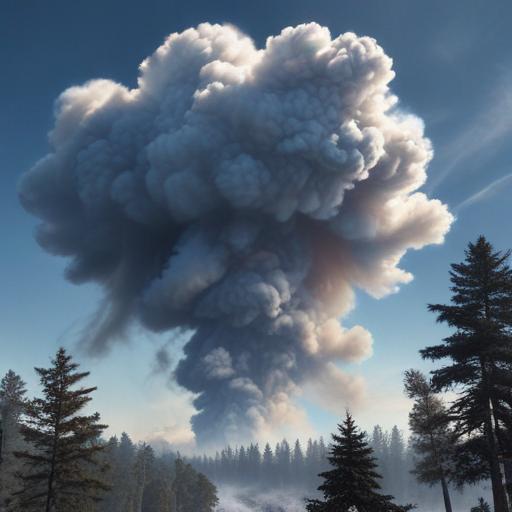Wildfires in Canada continue to wreak havoc, with smoke now spreading across the Northeast United States after a weekend of poor air quality in the Midwest and Great Lakes regions. A high-pressure system settling near the East Coast this week will complicate the situation, trapping the smoke beneath it and keeping weak winds from dissipating it for several days. This has led to air quality alerts across a dozen states, indicating unhealthy conditions for sensitive groups and the general population alike.
Cities such as Detroit, Chicago, and parts of Canada including Montreal and Toronto were ranked among the worst in the world for air quality on Monday. The wildfire smoke is projected to drift further, potentially reaching Ireland by Tuesday and impacting other parts of Europe, including Britain, Belgium, the Netherlands, and Germany by mid-week.
In the Western United States, critical fire conditions are forecasted starting Monday, with several active fires such as the Gifford Fire near San Luis Obispo, California, prompting evacuations. The states most affected by smoke this week include those in the Midwest, Great Lakes, Northeast, and Southwest.
Specifically, significant smoke concentrations will span from eastern Iowa to Maine, and expected conditions on Monday include haze reaching Boston, New York, and Philadelphia. Lower smoke levels are anticipated in the Mid-Atlantic region, though a noticeable haze is still likely. The forecast suggests that strong winds may help reduce smoke levels across the Midwest by Wednesday, but much of the Northeast will continue to be impacted by the stagnant smoke through at least Friday.
Currently, the largest wildfires in the U.S. include the White Sage fire in Arizona and the Monroe Canyon fire in Utah, which are exacerbating the smoky conditions. With 16 active fires in California as of Monday, including the Gifford Fire covering nearly 50,000 acres, many areas are under mandatory evacuation orders.
The smoke’s journey across the Atlantic, approximately 5,000 miles in distance, will occur at high altitudes, meaning it won’t significantly impact air quality but could create stunning sunrises and sunsets from Ireland to Norway and Germany in the coming days.
This ongoing wildfire season has been particularly severe, with over 16.3 million acres burned in Canada — the third-highest on record — driven by extreme drought conditions. As of now, more than 240 large wildfires are active in Canada, highlighting the dire need for continued monitoring and strategic management of these fires.
While the situation remains serious, it is a reminder of the natural resilience of the environment, and hopefully, relief efforts can help mitigate the damage and restore the affected areas in the future.
